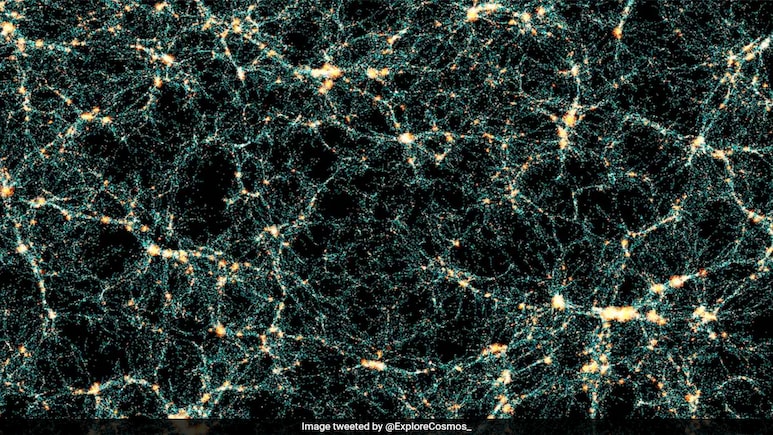
- Flagship 2 is the largest and most detailed universe simulation with 3.4 billion galaxies
- It tracks gravitational interactions of over 4 trillion particles in a virtual universe
- The simulation was developed using an algorithm by astrophysicist Joachim Stadel in 2019
The Euclid Consortium, part of the European Space Agency's Euclid space telescope mission, has unveiled Flagship 2, the largest and most detailed simulation of the universe to date. This vast digital model encompasses 3.4 billion galaxies and tracks the gravitational interactions of over 4 trillion particles, providing scientists with a virtual universe to analyse the wealth of data collected by Euclid, Space.com reported.
The Flagship 2 simulation was developed using an algorithm created by University of Zurich astrophysicist Joachim Stadel. In 2019, Mr Stadel utilised the Piz Daint supercomputer, then ranked as the world's third most powerful, to generate this remarkably detailed virtual universe model.
"These simulations are crucial for preparing the analysis of Euclid's data," astrophysicist Julian Adamek of UZH, a collaborator on the project, said in a statement.
What is the Euclid space telescope?
The Euclid space telescope, launched by the European Space Agency in July 2023, orbits 1.5 million kilometres from Earth at the Sun-Earth Lagrange Point 2 (L2). Its mission is to uncover the secrets of dark matter and dark energy by capturing detailed images of billions of galaxies and tracking their movement and clustering. By doing so, scientists aim to understand why the universe's expansion is accelerating. Comparing Euclid's observations with simulations will help test and refine current understanding of the universe, particularly dark matter and dark energy, which make up 95% of the universe but remain poorly understood.
Although the team expects Euclid's observations to align with the simulation's predictions, they're also prepared for unexpected discoveries. Flagship 2 is based on the standard cosmological model, representing current understanding of the universe. However, missions like Euclid aim to push beyond this knowledge, and according to Mr Stadel, there are already hints of potential flaws in the standard model.
"We can see how the universe expanded at that time and measure whether this constant really remained constant," said Mr Adamek. He also expects that Euclid will also uncover rare cosmic phenomena.
"Some events are extremely uncommon, but because Euclid covers such a vast region, the chances of finding unexpected or rare objects are high," he added.
Euclid's first observational data, known as Quick Euclid data release 1 (Q1), was released on March 19, 2025. The next major data release, Data Release 1 (DR1), is scheduled for October 21, 2026.
Track Latest News Live on NDTV.com and get news updates from India and around the world

